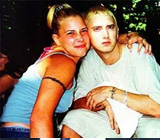
Marilyn Monroe Dead, Pills Near
USinfo | 2014-09-29 17:42

Edward Keating/The New York Times
"Off the set, one of Monroe’s favorite restaurants, Gino, was right around the corner, at 780 Lexington Avenue (where she dined alone or with her second husband, Joe DiMaggio, and later Arthur Miller, her third husband). After a long run, Gino closed in May. But across Lexington, at 143 East 60th Street, the divey Subway Inn is still serving from 10 a.m. until 4 a.m. daily. Vintage color photographs of Monroe shine in the dark interior, and legend has it that she sometimes used to land here when bar-hopping after work."
Hollywood, Calif., Aug. 5 -- Marilyn Monroe, one of the most famous stars in Hollywood's history, was found dead early today in the bedroom of her home in the Brentwood section of Los Angeles. She was 36 years old.
Sam Shaw/Shaw Family Archives
"Only two scenes were actually filmed in New York, mostly as publicity stunts. The first location was a town house at 164 East 61st Street, and during filming Monroe could be seen, 'clad in lingerie,' at a second-story window. 'Barricades blocked off the street, between Third and Lexington Avenues, for four hours,' The New York Times reported."
Monroe at 164 East 61st Street, where a scene from "The Seven Year Itch" was shot.
NY Daily News Archive via Getty Images
"After Wilder wrapped that scene, a drama that was not part of the film took place on East 55th Street, in Suite 1105 at the St. Regis Hotel, where Monroe and DiMaggio were staying. DiMaggio had been in the raucous crowd that night, persuaded to attend by Walter Winchell, who had sniffed out something he could dish in his gossip column. Presumably even he could not have predicted that the scene on Lexington Avenue would lead to a fight, a bruised Monroe and a divorce. On Oct. 5, 1954, The Daily News headline said it succinctly: 'Marilyn Splits With Joe Over Sexy Pictures.'"

Sam Shaw/Shaw Family Archives
"The second Manhattan location in 'The Seven Year Itch' — for 'the shot seen around the world' — was at Lexington and 52nd Street. Thanks to the 20th Century Fox publicity department, the details were released in advance."
Monroe at Lexington Avenue and 52nd Street in September 1954.
Beside the bed was an empty bottle that had contained sleeping pills. Fourteen other bottles of medicines and tablets were on the night stand.
The impact of Miss Monroe's death was international. Her fame was greater than her contributions as an actress.
As a woman she was considered a sex symbol. Her marriages to and divorces from Joe DiMaggio, the former Yankee baseball star, and Arthur Miller, the Pulitzer Prize playwright, were accepted by millions as the prerogatives of this contemporary Venus.
The events leading to her death were in tragic contrast to the comic talent and zest for life that had helped to make "Seven Year Itch" and "Some Like It Hot" smash hits all over the world.
Miss Monroe's physician had prescribed sleeping pills for her for three days. Ordinarily the bottle would have contained forty to fifty pills.
The actress had also been under the care of a psychoanalyst for a year, and had called him to her home last night. He had suggested she take a drive and relax. She remained home, however.
After an autopsy the Los Angeles coroner reported that Miss Monroe's "was not a natural death." He attributed it to a drug. He added that a toxicological study, to be completed within forty-eight hours, should yield more detailed information. He refused, until then, to list the death as a suicide.
Pending a more positive verdict by Dr. Theodore J. Curphey, the coroner, the Los Angeles police refused to call the death a suicide. They said they had no idea how many pills the actress might have taken, or whether any overdose might have been accidental. Miss Monroe left no notes, according to the police.
In addition to a physical autopsy, Los Angeles has a "psychological" autopsy. Two experts will look into the psychological history of Miss Monroe.
However, the non-physical study will reach no conclusions as to whether she committed suicide. Nor will it have a bearing on the toxicological tests.
During the last few years Miss Monroe had suffered severe setbacks. Her last two films, "Let's Make Love," and "The Misfits," were box-office disappointments. After completion of "The Misfits," written by Mr. Miller, she was divorced from him.
On June 8 Miss Monroe was dismissed by Twentieth-Century-Fox for unjustifiable absences during the filming of "Something's Got to Give," in which she was starred. Filming on the picture has not resumed.
Shortly before she was dismissed, Miss Monroe angrily protested to a reporter about attacks on stars. She said she had never wanted to do "Something's Got to Give."
"We're what's O.K. with the movie business," she asserted. "Management is what's wrong with the business. To blame the troubles of Hollywood on stars is stupid. These executives should not knock their assets around."
But a few weeks later, during which a $500,000 suit had been filed against her, Miss Monroe pleaded with Fox to let her return to work on the picture.
In low spirits she withdrew to her one-story stucco house in an upper middle-class section, which was far different from the lavish suites of the Beverly Hills Hotel that had been more typical of her. She died in the house at 12305 Fifth Helena Drive.
Housekeeper Last to See Her
The last person to see her alive was her housekeeper, Mrs. Eunice Murray, who had lived with her. Mrs. Murray told the police that Miss Monroe retired to her bedroom about 8 P.M. yesterday.
About 3:25 A.M. today, the housekeeper noticed a light under Miss Monroe's door. She called to the actress, but received no answer. She tried the bedroom door. It was locked.
Mrs. Murray went outside and peered into the bedroom through the closed French windows. Miss Monroe, she later told the police, looked "peculiar." An arm was stretched across the bed and a hand hung limp on a telephone, she said.
The housekeeper rushed back into the house and telephoned Miss Monroe's analyst, Dr. Ralph R. Greenson. When he arrived a short time later, he broke a pane of the French window and opened it.
He quickly examined the star. She was dead. He phoned Miss Monroe's personal physician, Dr. Hyman Engelberg. After his arrival, the police were called. This was at 4:20, almost an hour after the housekeeper had called Dr. Greenson.
Inspector Edward Walker of the Los Angeles police was asked if he regarded such a delay in calling the police as unusual. He said he did not think so.
"So far as the doctors were concerned, there was no evidence of crime, and the first doctor already knew she was dead," he said. "I have no criticism to make of them."
Two radio patrolmen and a sergeant were the first policemen to arrive in the tree-lined neighborhood. Shortly afterward the case was taken over by Detective Sgt. R. E. Byron.
Room Simply Furnished
Sergeant Byron said Miss Monroe's bedroom was neat, but sparsely furnished. He estimated it at fifteen feet square.
"All she had in the room, so far as I can recall, was the bed, a little dressing table and the night table. And the telephone that she pulled on the bed."
After the police had completed their investigation, Miss Monroe's body was removed to the Westwood Village Mortuary. The house was sealed and placed under guard.
The body was later taken to the county morgue for the autopsy, which was performed by Dr. Tsunetomi Noguchi, a pathologist.
In the last two years Miss Monroe had become the subject of considerable controversy in Hollywood. Some persons gibed at her aspirations as a serious actress. They considered it ridiculous that she should have gone to New York to study under Lee Strasberg.
Miss Monroe's defenders, however, asserted that her talents had been underestimated by those who thought her appeal to moviegoers audience was solely sexual.
The disagreement about Miss Monroe took another form. One group contended she was typical of stars who had abused their privileges on sets.
An opposite group argued that Miss Monroe was an outstanding example of how Hollywood wanted to treat talent as just another commodity.
Peter G. Levathes, executive vice president of Fox, said the suit would not be pressed against her estate.
Miss Monroe wound up as a virtual recluse.
This was the portrait drawn by neighbors hours after the death of the actress.
Hardly any of her neighbors had seen her more than once or twice in the six months since she had moved into her two-bedroom bungalow, which is modest by Hollywood standards.
Share this page



















